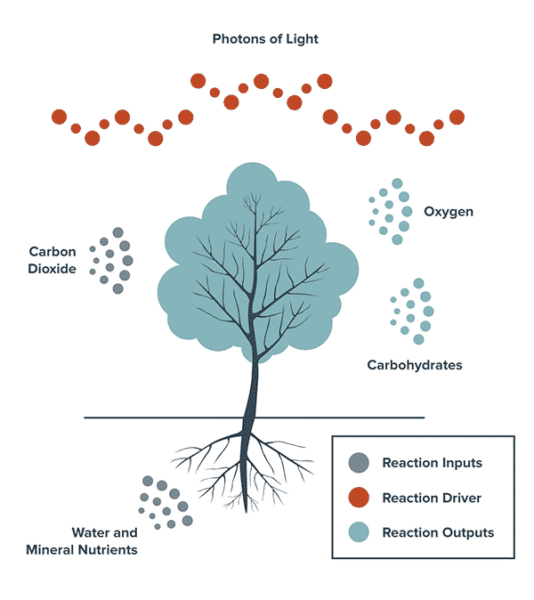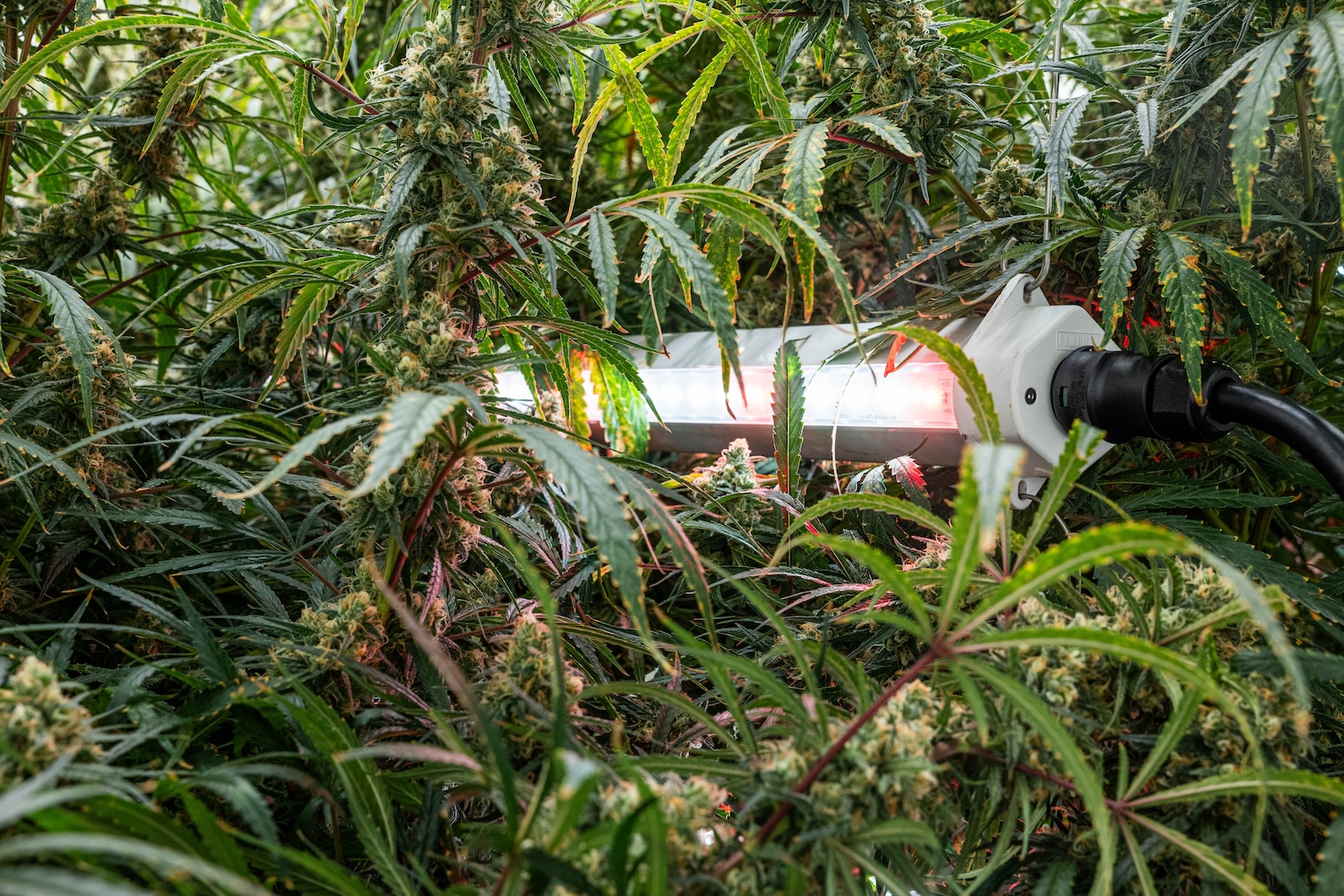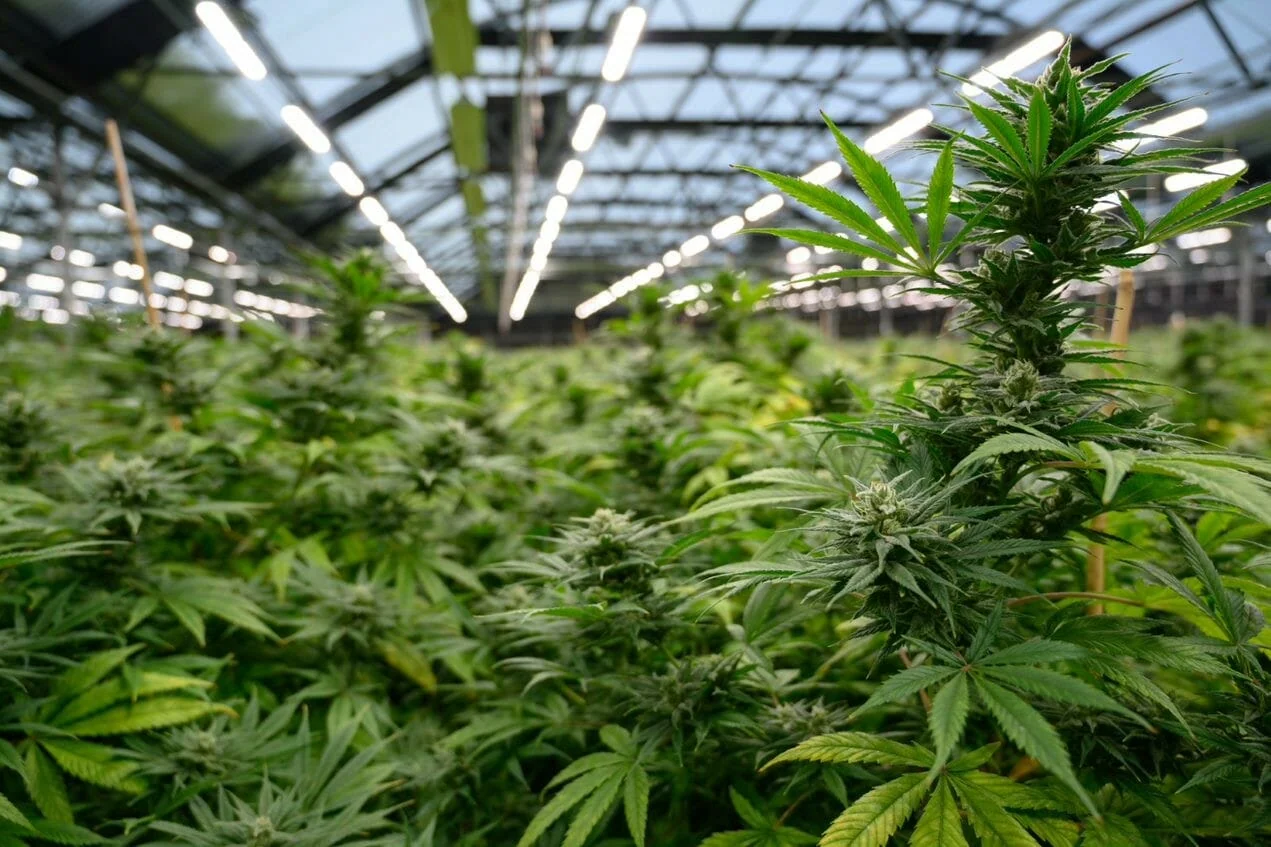Photosynthesis Guide
Light is the single most important environmental variable concerning plant growth. Plants are autotrophs that evolved the ability to use light energy from the sun to produce a food source through the process of photosynthesis. The process is quite complex, and for the sake of this guide, we can use this simplified definition of photosynthesis: using light energy to split water (H2O) and fix carbon dioxide (CO2) to form carbohydrates (CH2O) and oxygen (O2) (Figure 1). The purpose of this guide is not to discuss the biochemical light reactions of photosynthesis, but to discuss the different properties of light and their influence on photosynthesis. Quality (spectrum), quantity (intensity), and duration (photoperiod) are separate but related light properties that influence photosynthesis. The science behind each property will be defined, then the application of the properties will be discussed in regards to horticulture lighting systems.

Spectral Light Quality
Photosynthetically active radiation (PAR) is the major driver of photosynthesis in plants. However, not all wavelengths of light are equally efficient at driving photosynthesis. Two plant scientists by the names of Dr. McCree and Dr. Inada performed several studies in the 1970s to determine the influence of light spectra on photosynthesis. This research resulted in the creation of a photosynthetic response curve that is now appropriately known as the McCree curve. If you refer to the McCree curve (Figure 2), you will notice that red light (600-700 nm) is almost twice as effective as blue light (400-500 nm) at driving photosynthesis, with green (500-600 nm) light in between the two. Prior to this research, it was a common misconception that since chlorophyll absorbs light mainly in the red and blue parts of the visible light spectrum (leading to the green color of plant leaves) that green light was not used by plants for photosynthesis. However, precise and independent measurements of photosynthetic activity under different wavelengths by McCree and Inada demonstrated that light in the green spectrum (500 – 600 nm) is nearly as effective as blue light for a considerable number of plant species. The short explanation for this experimental fact is that higher plants have evolved both biochemical and biophysical solutions (e.g. accessory pigments) to utilize green light. These accessory pigments (mainly carotenoids) can be thought of as storage molecules for photons that are not directly absorbed by chlorophyll.

Spectral light quality is a key component that goes into the design of horticulture lighting systems, especially in sole-source (absence of sunlight) lighting applications. Traditional high-intensity discharge (HID) lighting systems (high-pressure sodium and metal halide) have always had a limitation when it came to modifying the spectral light quality. Using light-emitting diodes (LEDs) for horticulture lighting systems allow manufacturers the ability to create custom spectral light qualities along with many other advantages over conventional lighting systems, including: high photoelectric conversion efficiencies, low thermal output, and adjustable light intensities. Light quality not only influences photosynthesis, but it also influences the morphology of plants, which is known as photomorphogenesis.
Light Intensity
The number of photons that are absorbed by specialized photoreceptors known as chloroplasts directly influences the rate of photosynthesis. As light intensity (PPFD) increases, so does the rate of photosynthesis, until a saturation point is reached. Every plant species has a different light saturation point where photosynthetic levels plateau based on the light environment they evolved in. Light saturation occurs at much lower intensities in plants that evolved in shade conditions than those that evolved under full sun conditions. However, light saturation normally occurs (especially in sun plants) when some other factor (normally CO2) is limited (Figure 3). Another important consideration regarding light intensity is known as the light compensation point. Plants have a minimum light intensity required to promote maintenance growth to keep plants alive. As you would expect, the light compensation point occurs at higher light intensities for sun plants than shade plants. Providing adequate light intensities with the correct spectral light quality is critical to promote new plant growth.

Light Duration
Light duration (photoperiod) is the length of time a plant is exposed to light during a 24-hour period. The length of a photoperiod can influence the overall light intensity that a plant receives in 24 hours, which in turn influences overall growth. This is described as daily light integral (DLI), which is defined as the cumulative PPFD delivered during 24 hours, and is expressed in mol/m2/d. Photoperiod also influences the transition from vegetative to reproductive growth in several plant species. However, it is actually the dark period (skotoperiod) and not the photoperiod that determines when certain species will transition to reproductive growth. The photoreceptor phytochrome is mainly responsible for signaling the transition to reproductive growth in photoperiodic crops (To learn more about this click here to read our photomorphogenesis guide). Short day (long night) plants flower when the phytochrome perceives an uninterrupted long night (generally ≥ 12 hours). Long day (short night) plants flower during short nights (generally ≤ 12 hours). Alternatively, several plant species are day neutral, where photoperiod does not influence flowering.
Horticulture lighting systems can be used to provide photoperiodic light to extend the day length to either promote flowering of long-day plants or suppress flowering of short day plants regardless of the season or climate. Traditionally, HID, incandescent, or fluorescent lights have been used to provide photoperiodic lighting in greenhouses. However, these technologies are relatively inefficient at converting electrical energy into PAR. Fluence lighting systems convert electrical energy into PAR more efficiently than these lighting technologies. See this publication from Utah State University for more information.
Conclusion
The work of Drs. McCree and Inada was fundamental in understanding the influence of spectral light quality on photosynthesis; however, the study of photobiology is still in its infancy and rapid advances in LED technologies have allowed researchers the ability to expand on the work of previous plant scientists. There is still a great deal of work to be done in the study of photobiology, and Fluence Bioengineering is working with world-renowned plant scientists and commercial growers to continue to explore the interaction between life and light.


